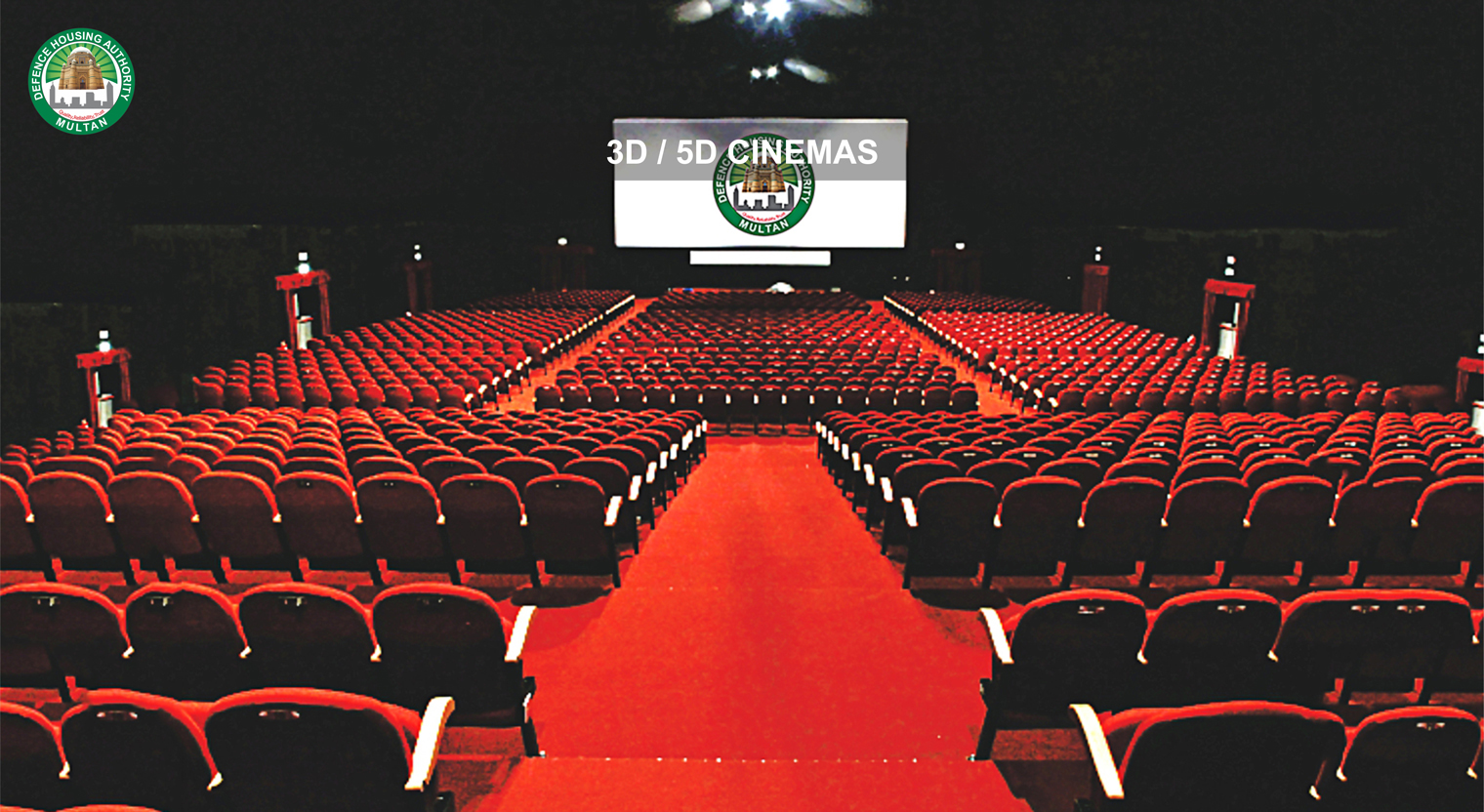
3D and 5D Cinemas DHA Multan
Published on by Rashid Minhas
Average Read time: 3 minutes 15 seconds
3D and 5D Cinemas is one of the attractive points for customers of DHA Multan. 5D cinema is a type of movie theater that uses advanced technology to provide a more immersive movie-watching experience. In addition to the traditional two-dimensional visual and stereo sound effects, 5D cinemas incorporate special effects such as motion seats, wind, fog, rain, and even smells to create a more realistic environment. The 5D cinema experience is meant to engage all five senses and make the viewer feel like they are in the movie itself, rather than just watching it on a screen. The technology used in 5D cinemas has evolved over the years, and the theaters have become popular around the world, especially in amusement parks and entertainment centers.
Three-dimensional (3D) cinema is a technological marvel that allows moviegoers to experience films in a whole new way. 3D films use special glasses and projectors to create the illusion of depth, making objects on the screen appear to jump out at the audience. In this blog, we will discuss the history of 3D cinema, how it works, and its impact on the film industry.
History of 3D/5D Cinema
Three-dimensional (3D) cinema is a technological marvel that allows moviegoers to experience films in a whole new way. 3D films use special glasses and projectors to create the illusion of depth, making objects on the screen appear to jump out at the audience. In this blog, we will discuss the history of 3D cinema, how it works, and its impact on the film industry.
History of 3D/5D Cinema
The history of 3D/5D cinema dates back to the early 1900s when various techniques were used to create the illusion of depth in films. However, it wasn't until the 1950s that 3D/5D cinema gained widespread popularity. The first 3D/5D feature film, "Bwana Devil," was released in 1952 and was a commercial success. This led to a wave of 3D/5D films being produced, including classics such as "House of Wax" and "Creature from the Black Lagoon."
However, the popularity of 3D/5D cinema declined in the late 1950s due to various factors, such as the poor quality of the glasses and the high cost of producing 3D/5D films. It wasn't until the 2000s that 3D/5D cinema made a comeback, thanks to advances in technology and the success of films such as "Avatar" and "The Avengers."
However, the popularity of 3D/5D cinema declined in the late 1950s due to various factors, such as the poor quality of the glasses and the high cost of producing 3D/5D films. It wasn't until the 2000s that 3D/5D cinema made a comeback, thanks to advances in technology and the success of films such as "Avatar" and "The Avengers."
How 3D/5D Cinema Works
3D/5D cinema works by projecting two separate images onto the screen, one for the left eye and one for the right eye. The glasses that the audience wears then filter out one image for each eye, creating the illusion of depth. There are two main types of 3D/5D cinema technology: passive and active.
Passive 3D/5D technology uses polarized glasses, which are made up of two lenses with different polarizations. The projector then projects two images onto the screen, each with a different polarization. The glasses then filter out one image for each eye, creating the illusion of depth.
Active 3D/5D technology uses glasses with LCD shutters that are synchronized with the projector. The projector alternates between projecting images for the left and right eye, and the glasses' LCD shutters open and close in sync with the projected images. This creates the illusion of depth.
Impact of 3D/5D Cinema on the Film Industry
3D/5D cinema has had a significant impact on the film industry, both creatively and financially. From a creative standpoint, 3D/5D cinema allows filmmakers to create more immersive and visually stunning films. This has led to the creation of films such as "Avatar," which would not have been possible without 3D/5D technology.
From a financial standpoint, 3D/5D cinema has proven to be a lucrative investment for studios. Films released in 3D/5D generally make more money than their 2D counterparts, and many films are now specifically produced for 3D/5D release. However, the high cost of producing and exhibiting 3D/5D films has also led to criticism and skepticism from some in the industry.
Conclusion
In conclusion, 3D/5D cinema is a fascinating technology that has a rich history and has had a significant impact on the film industry. Despite its ups and downs over the years, 3D/5D cinema remains a popular and exciting way to experience movies. As technology continues to evolve, it will be interesting to see how 3D/5D cinema continues to develop and influence the film industry in the years to come.
In conclusion, 3D/5D cinema is a fascinating technology that has a rich history and has had a significant impact on the film industry. Despite its ups and downs over the years, 3D/5D cinema remains a popular and exciting way to experience movies. As technology continues to evolve, it will be interesting to see how 3D/5D cinema continues to develop and influence the film industry in the years to come.